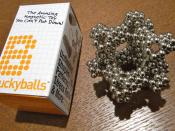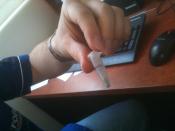good paper analyzing the life of a company -
Managing the Transition from Maturity to Decline: Diamond Power Corporation
This case study, prepared by Richard C. Scameborn, follows the Diamond Power Specialty Company from its humble beginnings in 1903 to its decline in 1991.
The birth of Diamond came with the invention of the hand cranked soot blower. As the years and technology progressed, so did the Diamond soot blower. Along with this main product, Diamond also added several other products to its line, but none had the profitability of the soot blower. Diamond had the market to itself for a number of years, but eventually two competitors sprang up to challenge Diamond: Copes-Vulcan and Bayer Company. Competition did not become fierce until World War II, when the soot blower became a major commodity used by the U.S. Navy to clean boilers on board its ships. At this point, the soot blower industry became a seller's market and the need for strategy (both corporate and business) became a necessity for growth and survival.
Diamond Power's main mission at its beginning, to produce soot blowers that would efficiently clean the inside of boiler as it continued working, basically stayed the same up until the addition of competition into the market. At this point, Diamond had to revise its mission to include technological advances to stay ahead of it main competitor, Copes-Vulcan. With the passage of time, production efficiency and technology were not enough. Diamond eventually had to add foreign sales, customer service, and replacement part production to its original plan to keep ahead of the game. By the 1970's, the mission to supply replacement parts and service became one of Diamond's top priorities as it opened parts and service plants in New Jersey, Georgia, Ohio, Texan, Colorado, North Dakota, California,


